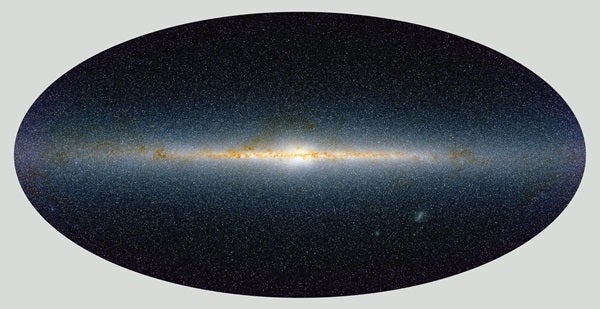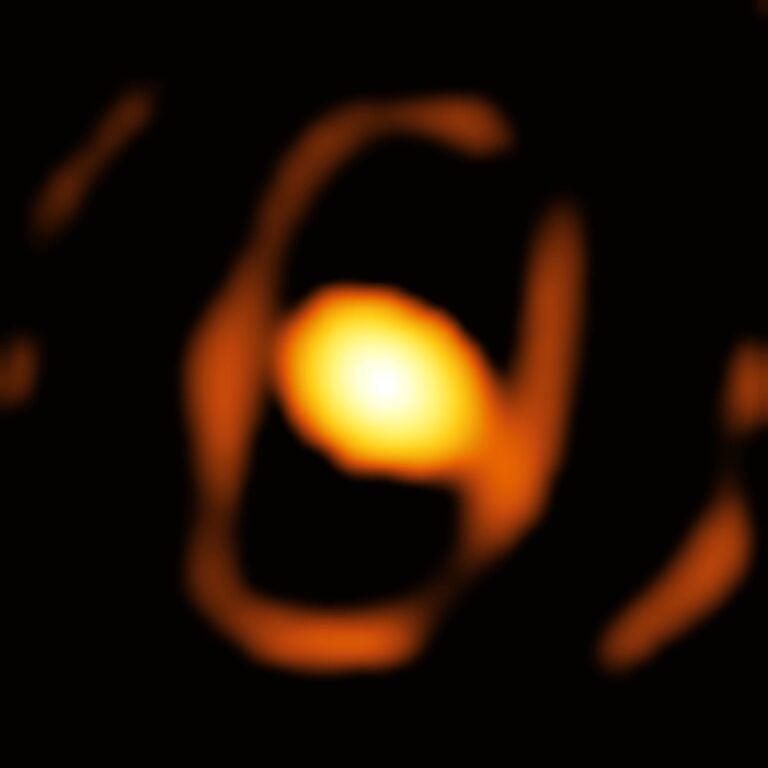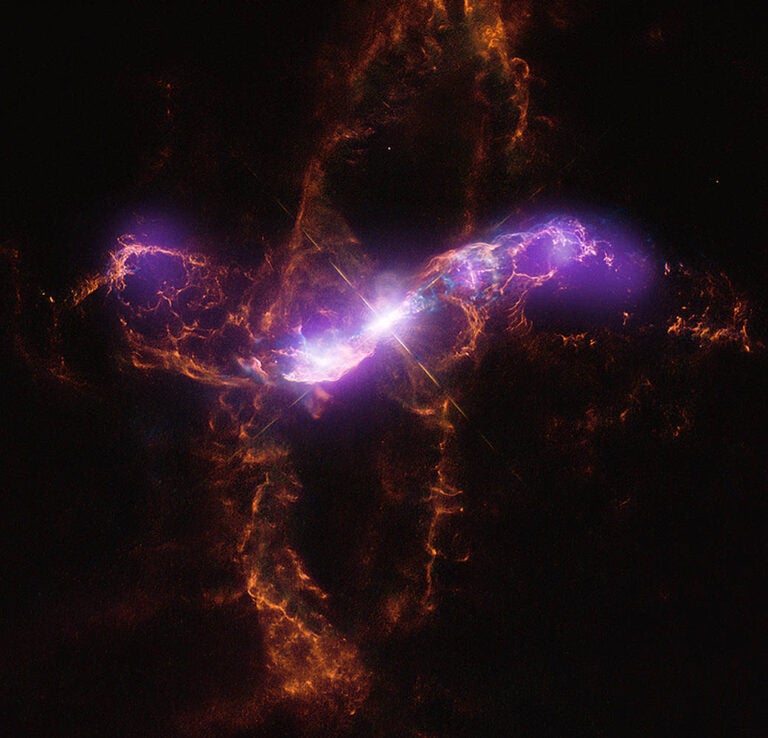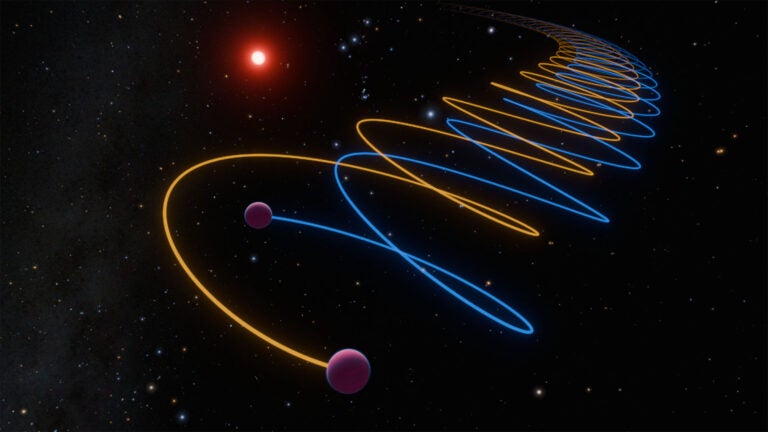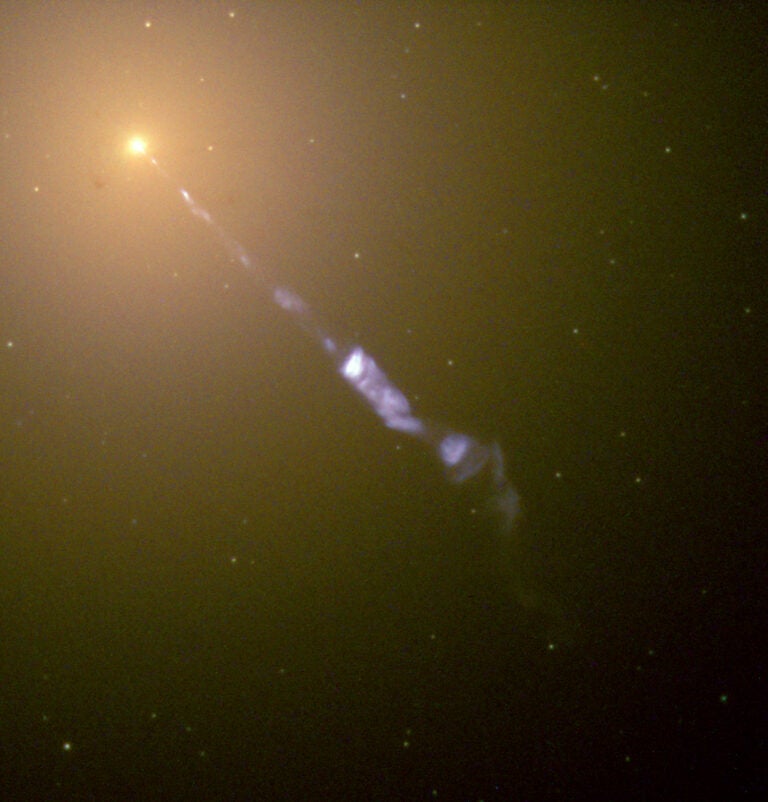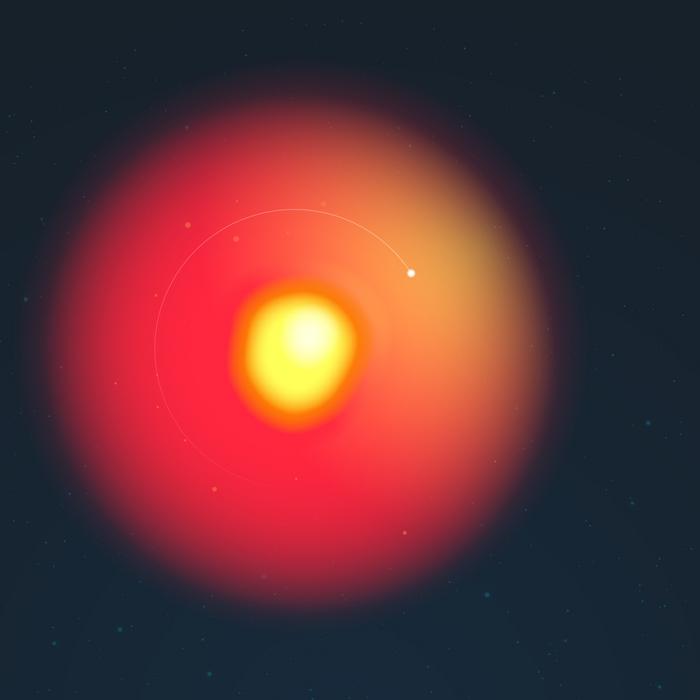The two stars that my group discovered are much farther away than most of the stars in our galaxy. In fact, fewer than 10 stars can be found in the Milky Way’s halo beyond about 390,000 light-years. It is important that these stars are in the halo, however, because that distinction is what answers your question.
While the disk of our galaxy is about 120,000 light-years across, the halo — a sparsely populated shroud of stars, gas, and dark matter — stretches much farther out into space. The disk of the Milky Way is where most of the stars of the galaxy can be found, including the Sun. It’s the home of all newborn stars, and it is the big swatch of stars that you see in the night sky if you are fortunate to get far away from city lights. The halo, on the other hand, contains few stars, making it much more difficult to observe.
But there are stars out there, and we believe that many of them are relatively old, left over from the initial formation of our galaxy. We even have started to observe dozens of smaller dwarf galaxies in the Milky Way’s halo. These objects orbit our own galaxy and will probably be shredded by the Milky Way’s strong gravitational pull someday.
Where one galaxy ends and the next begins is not clearly defined. While we haven’t measured the exact “edge” of the Milky Way, we think it is about 980,000 light-years away from the center of the galaxy. Thus, searching for distant stars is important because we can start to examine what the galaxy looks like far away from the disk.
The most distant star that we know of, ULAS J001535.72+015549.6, is about 900,000 light-years away. But my group is hoping to add to this census, and we are continuing to search for more distant stars cruising through the galactic halo.
Assistant Professor of Physics
Rider University

